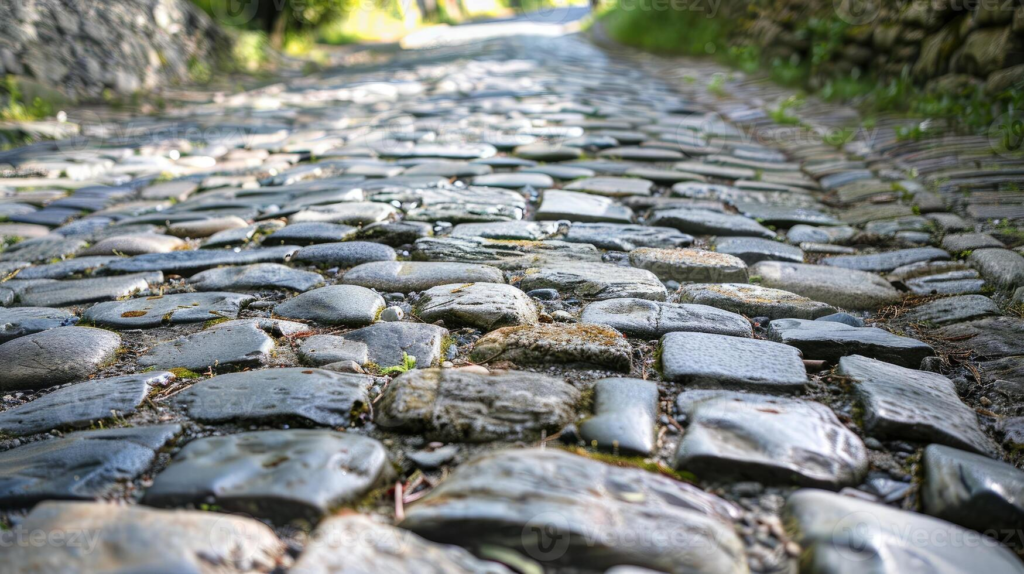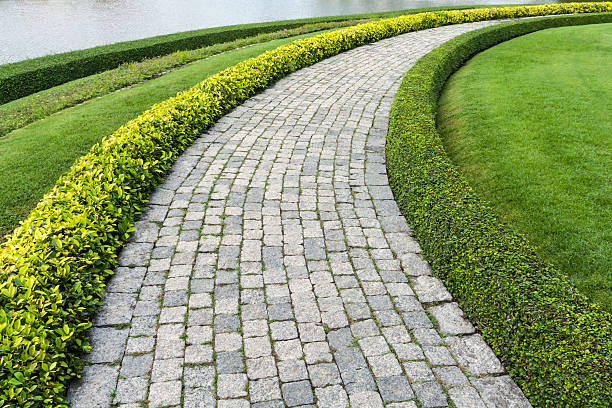A stone road is a type of road built using natural or crushed stones, known for durability, charm, and low environmental impact. These roads are common in old towns, rural areas, and scenic trails across the USA. In this article, you’ll learn everything about stone roads in easy and simple words.
What Is a Stone Road?
A stone road is a kind of roadway made using natural stones like granite, limestone, or cobblestones. These roads have been around for centuries and are some of the oldest forms of transportation pathways. Instead of using concrete or asphalt, a stone road is formed by laying down layers of stones, often crushed stone or shaped rocks, tightly packed to create a strong and stable surface.
In the past, these roads were used for horse carriages and carts, especially in old towns. Even today, some cities and rural areas in the United States still use or preserve these stone roads for their historical value and rustic beauty. Stone roads are not only strong but also require less maintenance compared to modern surfaces if built properly. Their rough surface gives them a unique charm, and many people love walking on them, especially in old neighborhoods or parks.
Why Are Stone Roads Special?
Stone roads are special for many reasons. First, they carry a sense of history and tradition. Many of the stone-paved streets in the USA date back over a hundred years. Walking on them feels like stepping back in time. They remind us of an era before highways and asphalt roads, when cities were built slowly and carefully with natural materials.
Secondly, stone roads are eco-friendly. Unlike asphalt roads that require oil-based materials, stone roads are made from natural elements. They don’t release harmful chemicals, and they allow water to seep through, reducing the risk of flooding or waterlogging.
Another reason stone roads stand out is their longevity. A well-built stone road can last for decades, sometimes even centuries. You can still find cobblestone roads in places like Boston, Philadelphia, and New Orleans that have survived since the 1800s.
Finally, stone roads offer better traction. This makes them especially useful in rainy or snowy areas, where modern roads can become slippery. Plus, their aesthetic appeal makes them popular in tourist spots, parks, and historic districts.
Where Can You Find Stone Roads in the USA?
Stone roads are scattered across the United States. You’ll most often find them in historic areas, national parks, and nature trails. While they’re not as common as concrete or asphalt roads today, many cities have preserved them for their cultural value and visual appeal.

Old Town Roads
In many historic cities like Boston, Savannah, Charleston, and Philadelphia, old town roads are paved with cobblestones or bricks. These areas were built during colonial times and the roads remain as they were centuries ago. Streets like Elfreth’s Alley in Philadelphia or Acorn Street in Boston are famous examples of stone roads that attract thousands of tourists every year.
Parks and Trails
If you enjoy walking or hiking, you’ve probably come across a stone path or stone trail road in a national or state park. These roads are often made of crushed stone or flat rocks, providing a stable and natural surface that blends into the environment. Appalachian Trail, Yellowstone, and Grand Canyon trails include stone paths that guide hikers safely while preserving nature.
Tourist Places
Many tourist destinations use stone roads to give their area a quaint, old-world feel. Areas like New Orleans’ French Quarter, Mackinac Island in Michigan, and Old San Juan in Puerto Rico maintain their cobblestone streets not only for historical value but also for tourism. The look and feel of these roads enhance the overall atmosphere, making them perfect for photos, horse-drawn carriage rides, and leisurely walks.
How Are Stone Roads Built?
Building a stone road is a step-by-step process that requires skill, planning, and the right type of stone. First, the road area is cleared and leveled. Then, workers lay a base layer using crushed stone or gravel. This layer acts as the foundation and helps with drainage.
Next, they place larger stones or cobblestones on top. These are arranged carefully, sometimes by hand, to fit tightly together. Gaps between the stones are filled with smaller gravel or sand to lock the stones in place. Finally, the surface is compacted using rollers or hand tools to make the road solid and smooth.
In modern times, machinery is used to speed up this process, but many heritage preservation projects still rely on traditional hand-laying methods to keep the road’s historic character.
Are Stone Roads Good for the Environment?
Yes, stone roads are generally more environmentally friendly than asphalt or concrete roads. Since they’re made from natural stone, they don’t require chemical processing or fossil fuels to manufacture. That means fewer carbon emissions during construction.
Stone roads are also permeable, which means rainwater can pass through the gaps between the stones and soak into the ground. This helps to recharge groundwater and prevent surface runoff, which often carries pollutants into rivers and lakes.
Furthermore, the natural look of stone roads allows them to blend into rural and park landscapes without disturbing wildlife. When properly maintained, these roads can last for generations, reducing the need for constant repairs or reconstruction.
Types of Stone Used in Roads
Several different types of stone are used in building roads, depending on the location, climate, and purpose. Here are the most common:

Granite
Granite is one of the most durable and hard natural stones. It’s often used in cobblestone paving because it can withstand heavy loads and weather changes. Its rough surface also provides great grip for vehicles and pedestrians. Granite stones are commonly found in northeastern states where the climate is colder and more rugged.
Limestone
Limestone is a softer, lighter-colored stone that’s easier to cut and shape. It’s widely used in the Midwest and southern USA. While not as strong as granite, it’s still quite durable and has a natural charm that makes it suitable for rural roads and walking paths.
Cobblestone
Cobblestones are rounded stones, usually collected from riverbeds or shaped from granite. They’re known for their classic, old-world feel, and were popular in the 18th and 19th centuries. Today, cobblestone streets are mostly found in historic districts, but they’re still being used for decorative driveways, courtyards, and city walkways.
Stone Road vs Concrete Road
When comparing a stone road to a concrete road, each has its own advantages. Stone roads are more environmentally friendly, provide better water drainage, and often have a longer lifespan when maintained properly. They also require less energy to produce, since stones are a natural material.
On the other hand, concrete roads are smoother, better for high-speed traffic, and easier to construct with modern machines. However, they can crack over time, especially in areas with extreme temperatures. Concrete also needs chemical additives, which are not as eco-friendly as natural stone.
So, while concrete roads are better for highways and cities, stone roads are ideal for parks, old towns, rural roads, and environmentally sensitive areas.
The Bottom Line
Stone roads are more than just old-fashioned paths. They are a blend of nature, history, and functionality. From their origins in ancient civilizations to their continued presence in historic towns and natural parks, stone roads remain an important part of our transportation history and landscape.
Whether you’re walking down a cobblestone street in Boston, hiking a stone trail in the Rockies, or admiring a stone-paved road in a quiet village, you’re experiencing something special. These roads offer beauty, durability, and sustainability, making them an excellent choice even in modern times.


